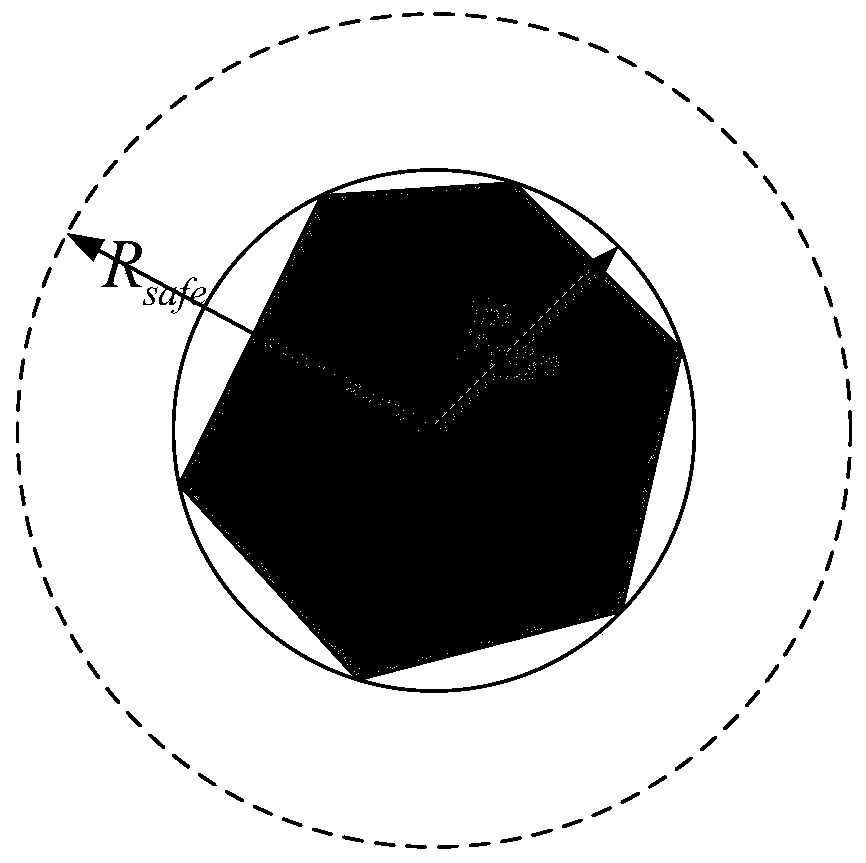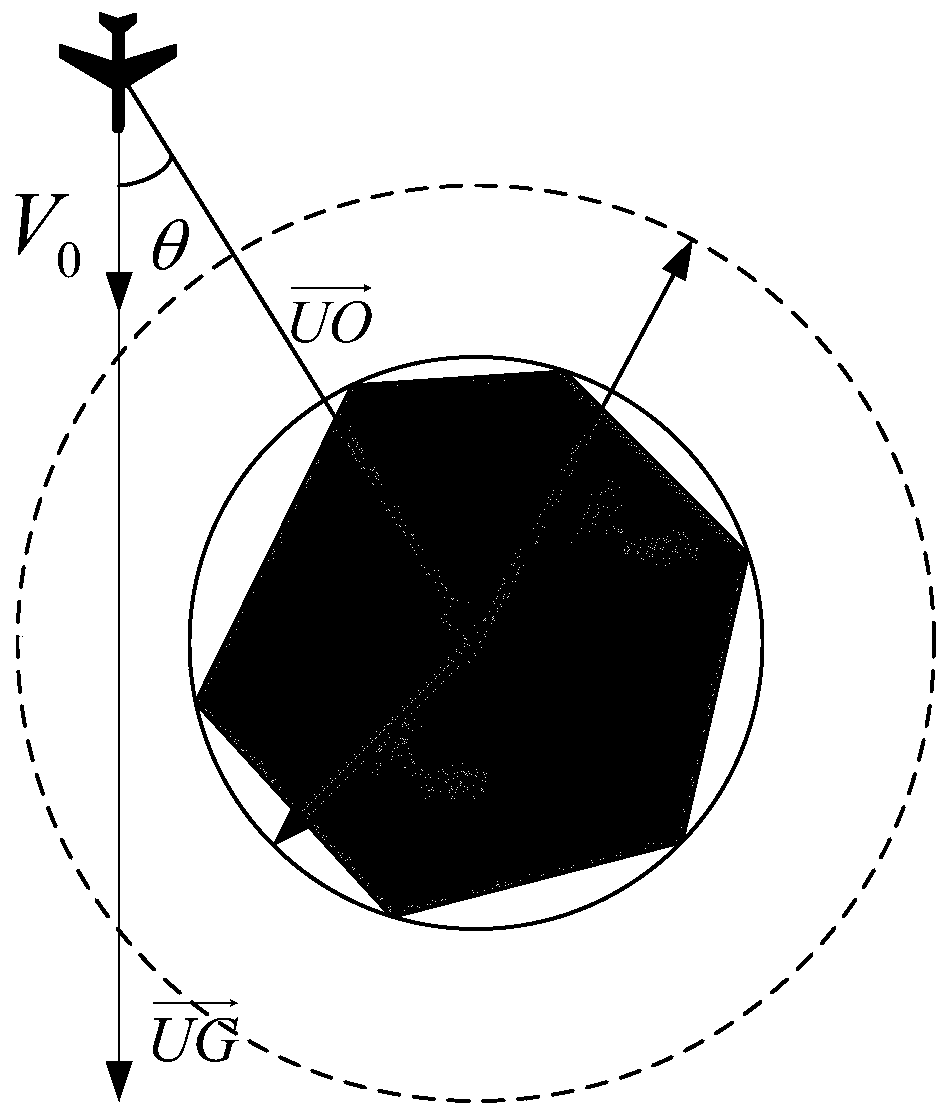An obstacle avoidance method for unmanned aerial vehicle based on double-rotation lyapunov vector field
A technology of unmanned aerial vehicles and vector fields, applied in three-dimensional position/course control, etc., can solve problems that are not suitable for dynamic obstacle avoidance planning, difficult, and do not meet dynamic constraints
- Summary
- Abstract
- Description
- Claims
- Application Information
AI Technical Summary
Problems solved by technology
Method used
Image
Examples
Embodiment 1
[0109] Based on the single obstacle avoidance model, the obstacle avoidance simulation verification of a single obstacle is carried out. The simulation parameters are shown in Table 1:
[0110] Table 1 Simulation parameters
[0111]
[0112] The obstacle avoidance of a single static obstacle is first verified. Figure 13 In , the obstacle coordinates are on the connecting line between the UAV and the target. At this time, the obstacle avoidance effects on both sides are the same. When the obstacle coordinates are (13, 9), according to the method in step S3, it is determined that the left side of the UAV is the optimal obstacle avoidance direction, and the rotation direction of the vector field is clockwise. When the obstacle coordinates are (9, 13), the conclusion is opposite to that of (13, 9). In order to verify the success of obstacle avoidance and the dynamic constraints of the UAV, the obstacle avoidance in the counterclockwise direction of the obstacle coordinates (...
Embodiment 2
[0114] Next, the obstacle avoidance of a single dynamic obstacle is verified. Obstacle avoidance of dynamic targets is a key point of the obstacle avoidance problem. The initial position of the obstacle is (2.3,19.7), and its movement direction angle is -45 ° , after the unmanned aerial vehicle detects an obstacle, it performs obstacle avoidance, and then uses the method of step S4 to determine whether the obstacle avoidance is successful. The simulation result shows that at t=97, it is determined that the obstacle avoidance is successful. A single dynamic obstacle avoidance track such as Figure 14 shown.
[0115] In order to illustrate the accuracy of the dynamic obstacle avoidance method more intuitively, the simulation results of two obstacle avoidance directions are compared for dynamic obstacles. The radius of the obstacle safety circle in the simulation is R safe = 3.3km, the simulation results are shown in Table 2:
[0116] Table 2 Comparison of simulation results ...
Embodiment 3
[0121] In order to verify the performance of the method of the present invention, the method based on Dubins path and the artificial potential field method are used as comparative verification. Consider the static obstacle avoidance of the starting point coordinates (0,0), the target point coordinates (20,20), the obstacle parameters (11,11,3) and the starting point (2.3,19.7), and the speed size is 0.141 , the velocity direction is -45 ° dynamic obstacles for obstacle avoidance. Since the position of the static obstacle is on the line between the starting point and the target point, there is a minimum point, so the improved artificial potential field method is used to avoid the obstacle by adding a disturbance factor to overcome the local minimum point; according to the UAV maneuvering in Table 1 Performance constraints, it can be known that the minimum turning radius R of the UAV in the Dubins path min =4. The simulation results are as follows:
[0122] Table 3 Simulatio...
PUM
 Login to View More
Login to View More Abstract
Description
Claims
Application Information
 Login to View More
Login to View More - R&D
- Intellectual Property
- Life Sciences
- Materials
- Tech Scout
- Unparalleled Data Quality
- Higher Quality Content
- 60% Fewer Hallucinations
Browse by: Latest US Patents, China's latest patents, Technical Efficacy Thesaurus, Application Domain, Technology Topic, Popular Technical Reports.
© 2025 PatSnap. All rights reserved.Legal|Privacy policy|Modern Slavery Act Transparency Statement|Sitemap|About US| Contact US: help@patsnap.com



